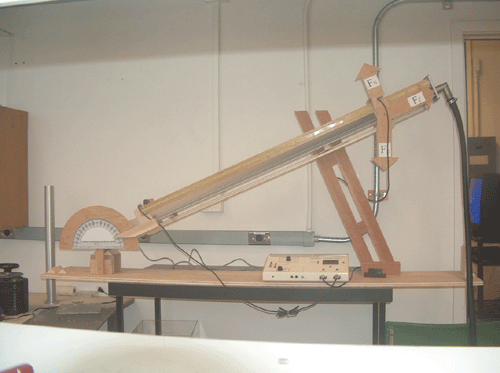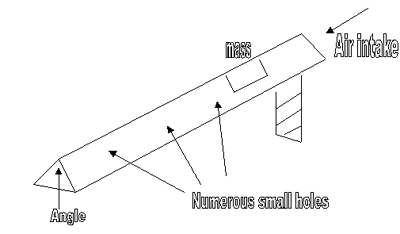
How does it Work ?
This Demonstration Equipments provides frictionless planes by pushing out air through numerous tiny holes on the surface. The diagram shows the basic figure of the equipment.

An object will slide down the plane, experiencing no friction due to air supports. An object that travels down on the plane is designed so that it gets all the air supports along the track. Below shows the onject sliding down the plane at an angle of 25 degrees. the object (as shown) covers all the holes under its bottom surface.
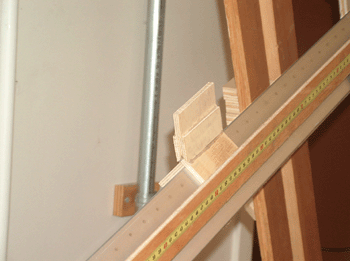
Two strong magnets are used make the mass of the object greater. A vacuum is used to pupm air into the triangular prizm-shpaed inclined planes. Below has the picture of the vacuum connected to the planes.
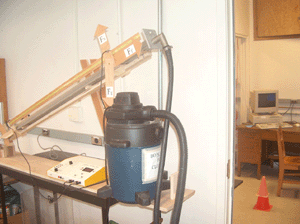
There are two light sensor gates that will detect an object when it passes those tow gates. A timer is used to measure the time it takes to travel between two gates to 4th decimal places.
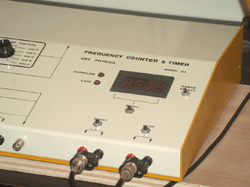
To calculate the time an object takes to travel on an inclined plane is the slope (the angle) of the incline, the distance, and the mass of an object (which will reveal that the mass of an object doesn't affect the travel time) are needed and can be found using the protractor attached at the hinge of the plane and the meter stick attacked to the demonstration.
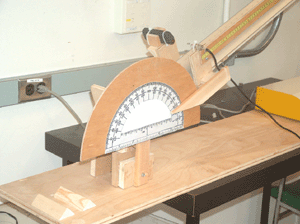
Three arrows, each representing Force of Normal, Force of Gravity, and Force of Friction, are added so that students can clearly understand how the force vectors are aligned on the inclined planes.
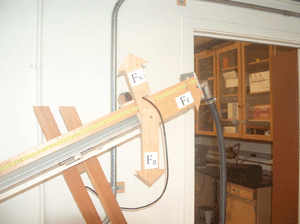
The object's accurate travel time between two gates will be read off from the timer. We can also measure the angle at which the plane is inclined with a protractor attached, and weight the mass that travels with a fine scale. We will, first, theoretically calculate expected travel time for the mass, and perform the demonstration to test out if they match. (Calculation 1) This demonstration allows various angles, masses, and distance. We will later then, turn off the vacuum, and calculate the Coefficient of Friction in between the mass and the planes. (Calculation 2)
